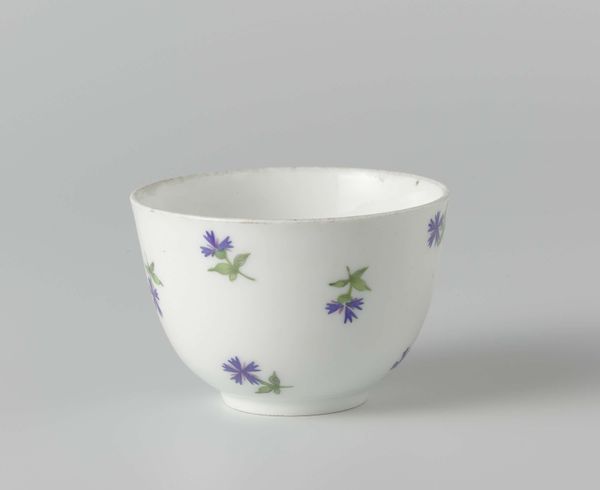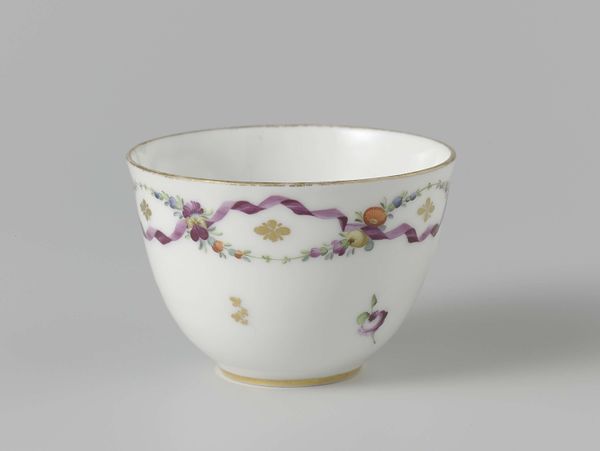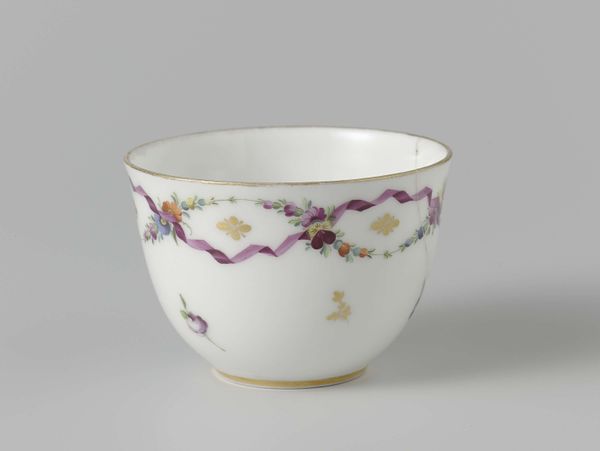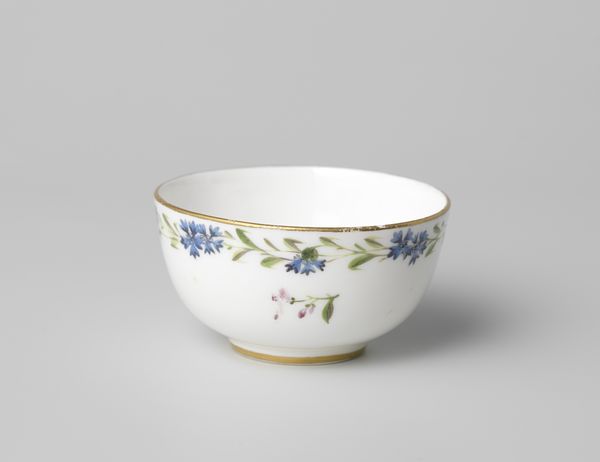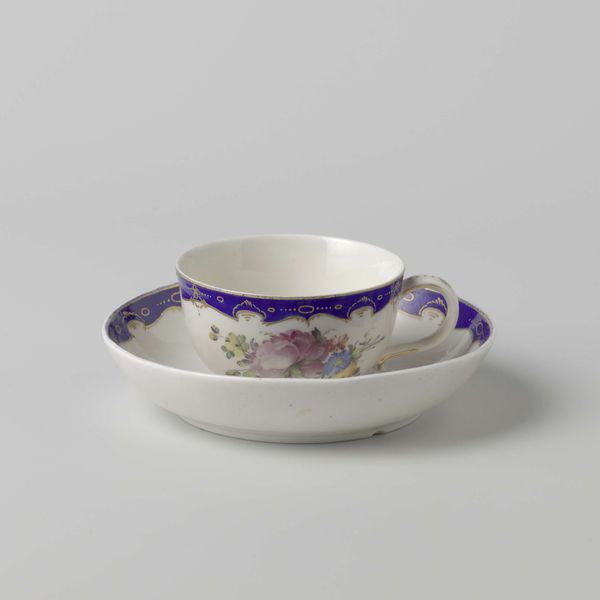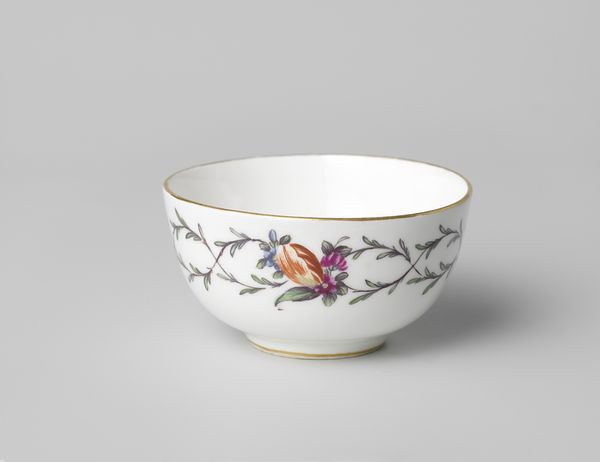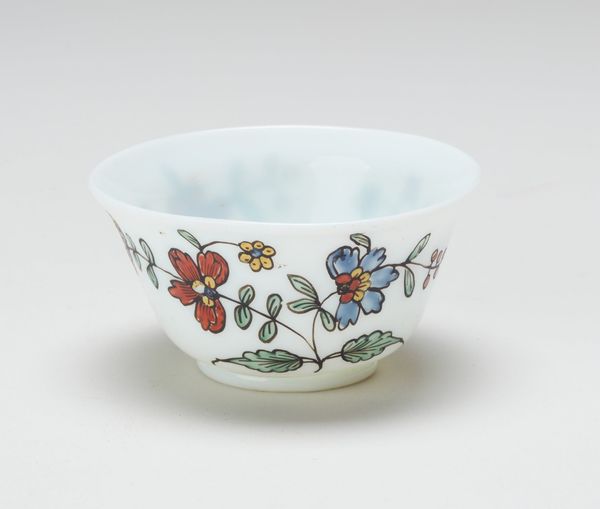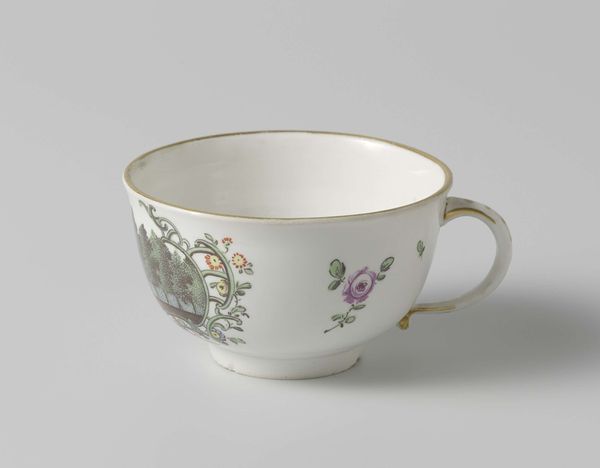
painting, ceramic
#
neoclacissism
#
painting
#
ceramic
#
decorative-art
Dimensions: height 4.5 cm, diameter 6.6 cm
Copyright: Rijks Museum: Open Domain
Curator: Immediately, I'm struck by the stark simplicity of the ceramic cup. The gentle curve is rather pleasing to the eye. Editor: Yes, its form possesses a clean geometry—a study in minimalist design made around 1784. What we have here is a piece called "Kop, beschilderd met korenbloemen" or "Cup, Painted with Cornflowers," made at the Loosdrecht porcelain factory, now held in the Rijksmuseum collection. Curator: The Loosdrecht factory? Interesting. It certainly exudes a sense of restrained elegance befitting of Neoclassicism with the stark contrast between the white background and the delicate blue flowers with the soft green leaves, placed just so on the cup. Editor: Precisely. Loosdrecht, under the patronage of William V, was striving to produce porcelain that rivaled the French and German manufactories. This piece represents that aspirational quest for refinement. You see a desire for ornamentation that spoke to elite patronage in the Netherlands. Curator: It does evoke an exclusive air, one might imagine afternoon tea at court. I want to get into the use of colour, notice the specific tint and tones? What is being conveyed? Editor: That precise application and choice of these specific colours would probably indicate high quality materials to the upper classes, signalling status as a piece created during a period deeply fascinated by classical motifs. The cup stands as a symbol of the court's own cultivated tastes. Curator: I suppose in that context the cup becomes less an object of daily use and more a small monument to taste. I still like the geometry, though. The shape itself makes one focus on the painted surface which adds value. Editor: Precisely; the surface design functions, I think, as both embellishment and as a proclamation of sophistication. It encapsulates how artistic patronage shaped aesthetic choices during that time. Curator: So much from such a seemingly modest piece. Editor: Indeed. "Kop, beschilderd met korenbloemen" reflects the complexities of status, taste, and Neoclassical ambition.
Comments
No comments
Be the first to comment and join the conversation on the ultimate creative platform.

